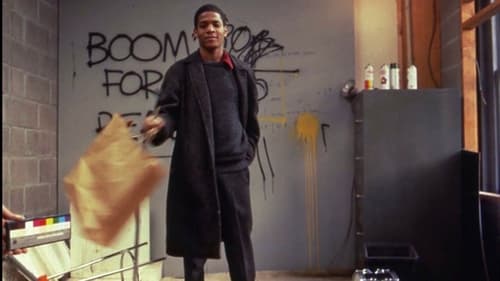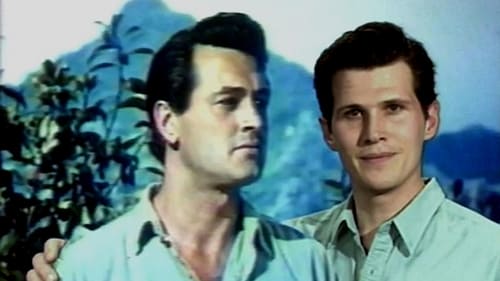Coleen Fitzgibbon
Рождение : , United States
История
Coleen Fitzgibbon is an American experimental film artist. Between 1973-80 she worked under the name Colen Fitzgibbon.

Self
История художника Жана-Мишеля Баския от первых шагов в искусстве до момента продажи своей первой картины.
Портрет художника в юности — заразительный жанр документалистики, особенно когда место становления — Нью-Йорк рубежа 70-х и 80-х на пороге катастрофы. В разорённом городе, где пустые дома поджигали для сбора страховых денег, гаитянский парень в свободном пальто и выбритым лбом выглядел как ещё один полубездомный художник, с которым не случится ничего хорошего

Sound Designer
Super 8mm transfer to digital, color, sound, 5:07 minutes. Still images of things passing; a diary between city and country. Marjorie Keller and Coleen Fitzgibbon drive to Carolee Schneemann’s to feed Kitsch.

Director
Super 8mm transfer to digital, color, sound, 5:07 minutes. Still images of things passing; a diary between city and country. Marjorie Keller and Coleen Fitzgibbon drive to Carolee Schneemann’s to feed Kitsch.

Super 8mm transfer to digital, color, sound, 5:07 minutes. Still images of things passing; a diary between city and country. Marjorie Keller and Coleen Fitzgibbon drive to Carolee Schneemann’s to feed Kitsch.

Director
Expanding a system; enhanced excerpt from "Internal System" with optical sound track and video raster in frame. 1974-2010

Director
Documents performances of DNA, James Chance and the Contortions, and Boris Policeband in NYC at a benefit concert for X Motion Picture Magazine and artists’ group Collaborative Projects Inc. It was shot in black and white super 8 and edited on video. It was filmed in 1978 but not completed until 2009.

Associate Producer
In this revisionist documentary, actor Eric Farr re-creates the character of Rock Hudson in order to take a look back at his films. It compares the actor's screen (and public) image with his real life and shows certain scenes, lines and situations in his films to insinuate that Hudson may have been gay.

Line Producer
In this revisionist documentary, actor Eric Farr re-creates the character of Rock Hudson in order to take a look back at his films. It compares the actor's screen (and public) image with his real life and shows certain scenes, lines and situations in his films to insinuate that Hudson may have been gay.

Director
Original hi-8 video to digital, color & b/w, sound, 16 minutes. Persons unknown wait on a street in a large city for something to come their way. The greeting is “are you anywhere?” They float past the infinite set of stairs going nowhere during one day out of several days from 1985 to 1995. Land of Nod is an experimental short documentary shot NTSE in the late eighties and transferred to digital. Nod captures a day of black marketeers in the street waiting for action.

Producer
A separated couple try to keep in touch through postcards of typically "American" sights: motels, monuments, parks; but their postcards cross in the mail. Misunderstandings arise; passion subsides; romance fades... Yet the postcards keep on coming.

Movie Actress
A Nietzschian parable on the fate of innocence, THE TRAP DOOR follows the mishaps of Jeremy (John Ahearn) as he is fired by his boss (Jenny Holzer), gets laughed out of court by Judge Gary Indiana, loses his girlfriend to sleazy Richard Prince, is hustled by prospective employer (Bill Rice) and mauled by predatory bird-women. Finally, he seeks the help of a shrink (the legendary Jack Smith) who turns out to be the most demented of all.

Director
Micro text film of the February 6, 1976 Daily News, New York City issue cover to cover

Director
Lower East Side (LES) (2011/1976)
Super 8mm transfer to digital, color, sound, 16:31 minutes. Documentary style critique of the Island of Manhattma’s fiscal state of affairs and the John Dough Cult. Written and directed by C. Fitzgibbon. Narrated by Robin Winters. Cast: Tom Sigal, Diego Cortez and Robin Winters.

Director
16mm transfer to digital, b/w, sound, 8:22 minutes. Taking it public: micro text film of records (warrants, debts, bank checks, etc.)(2011/1976)

Director
16mm and digital, b/w & color, sound, 9:51 minutes. Micro text film of the June 1976 issue of German magazine Der Spiegel with rock music.

Director
"In one of her more minimalist films, the viewer is presented with nothing but a blank monochromatic frame slowly shifting through various intensities of color saturation, flickering / shuttering repeatedly from light-to-dark (and back again) for a duration of 45 minutes. The only hint of information we have to navigate through this complex and difficult film is at the head and tail of the film, in the rolling text "credits" introduced as positive at the head of the film and negative at the end. Technical information such as film stock, film speed, film length, camera lens, shutter, projector, and a host of other data appear on the screen like hieroglyphs of some secret language to be decoded." -Sandra Gibson and Luis Recoder

Director
16mm, color, sound, 10 minutes. The filmmaker performs her solitary act of cleaning. A static camera tightly frames the studio sink, dirty with paint and other residue while the artist engages in a concerted ritual of scrubbing and scraping … a treatise on the over-cleanliness of certain reductivist gestures in history of art making. (1975)

Director
Micro text film of selections from the English dictionary (contemplation: the yellow notebook and blade-less knife handle were missing when the blue car impacted the red car).

Director
Digital, color, sound, 3 minutes.

Director
Micro text film of the Nov. 1974 issue of U.S. magazine Time cover to cover.

Director
The destruction of cinematic imagery and sound, which allows for the release of subliminal thought.

Director
A collage of recurring speech fragments, which provide a patchy voice-over "commentary" which skids across a sampling of found film.

















